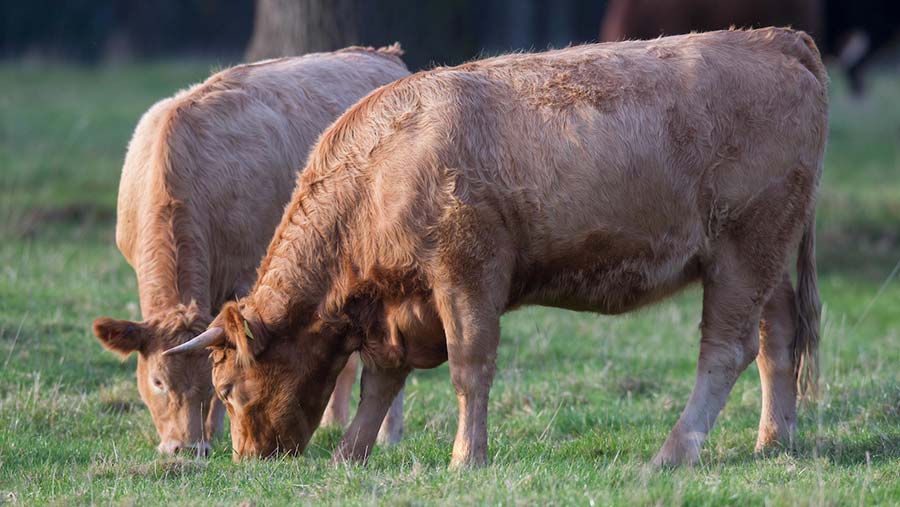How grazing strategy can control parasites in cattle
 © Tim Scrivener
© Tim Scrivener Farmers should consider undertaking grazing management strategies to help reduce the challenge and impact of cattle parasites this spring.
Rachel Hayton of Synergy Farm Health, says it is important to consider a holistic approach to control parasites.
Recent research has proven that grassland management can provide a degree of parasite control without compromising production.
See also: How to make a fly trap to monitor fly strike
A paper recently published by Andy Forbes, honorary professor at the University of Glasgow’s School of Veterinary Medicine and Cows technical representative, has emphasised that mixed-aged grazing, rotational grazing and using low risk pastures such as silage and hay aftermaths have a role to play.
These tactics can reduce the exposure of naïve animals to high worm burdens which can subsequently increase daily live weight gain in youngstock.
Anthelmintic resistance
“With anthelmintic resistance recognised as a potential risk to the cattle industry we can’t overlook the role that grassland management can play as part of a farms parasite control plan,” says Mrs Hayton.
She said that managing anthelmintic resistance through the responsible use of cattle wormers was also key.
“Cattle wormers are the mainstay to help keep on top of parasite burdens, but when choosing the right wormer, it must be suited to the situation,” said Mrs Hayton.
“It’s important to consider the efficacy of the product, whether you have any resistance issues on-farm, and its spectrum of activity, as not all wormers are effective against all stages of parasite lifecycles.
“If anything, farmers should be weighing every animal or using a weighband to calculate the correct dose each time, and they should always read the product label.”
Grazing management strategies
Mixed age grazing
It’s highly likely that older cattle have a more robust immunity to common gastrointestinal worms.
As a result, they can tolerate infections better and excrete lower concentrations of worm eggs in their dung when grazing, potentially reducing the level of pasture contamination.
Therefore, grazing naïve first season animals with older cattle may offset the risk of parasite burdens due to the reduced level of exposure.
Leader-follower systems
This involves youngstock, in their first grazing season being grazed ahead of older cattle and moved to fresh pasture when the grass is grazed to a level that continues to provide adequate grazing for the cattle that are following on.
As cattle rotate through the paddocks, so long as they remain on each paddock for less than three weeks, they should not be exposed to a high parasite challenge.
Grazing low risk pastures
Silage and hay aftermaths that have not been grazed for 12 months provide a low risk option to move youngstock onto during early or mid-July.
In this instance, susceptible cattle are moved to clean pastures in advance of the peak larval season, and therefore the mid-season build-up of infective larvae is largely prevented.
Source: Forbes, A, 2016, Grassland management and helminth control on cattle farms, Livestock, Vol 22 No 1
COWS’ 5 Rs to the effective use of cattle wormers:
- The RIGHT product for the type of worm
- The RIGHT animal
- The RIGHT time
- The RIGHT dose rate
- Administered in the RIGHT way
